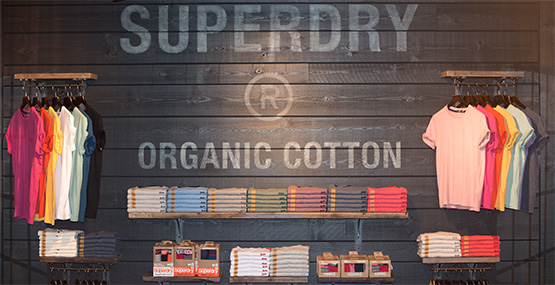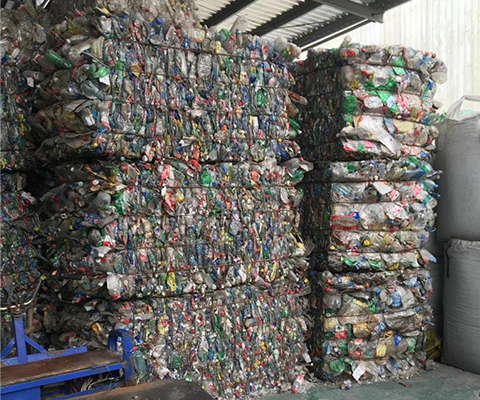
Low impact materials
Organic Cotton, Recycled And Low Impact Materials
All pure cotton items will be organic or cotton in conversion by 2025, with 20,000 farmers supported to convert to organic production. We plan to convert all remaining cotton in our collections to organic by 2030.
68% of the products Superdry bought in 2023 contained cotton, which remains the largest single material we use.
Accelerating our targets, 65% of our cotton garments will contain organic cotton by 2025. We have already converted our Underwear, Basic Non-Printed Tees and Polo categories to organic or Cotton in Conversion.
Overall in FY23 we bought over 6.5 million individual garments made using organic cotton - representing 46% of all pure cotton garments, or 37% of our overall cotton footprint (measured in tons) to organic cotton.
We have also made commitments to expand our use of cotton in conversion and recycled cotton.
In FY23 we bought over 2 million garments that contained Cotton in conversion and over 55K that utilised fully recycled cotton.

100% of factories supplying organic cotton are certified by the Organic Content Standard (OCS).
This year we sourced over one third of our organic cotton direct from our Superdry supported farmers. This cotton is fully traceable back to source (i.e. farm), through our partnerships with suppliers and mills who produce our Underwear, Vintage Logo and Woven collections. We have entered into validated agreements upfront to secure the supply of organic cotton when farmers sow their seed – these agreements are overseen by the ORGANIC COTTON ACCELERATOR (OCA).
Farming practices used in organic agriculture, such as crop rotation, green manure, composting, reduced tillage, and the recycling of crop residue, can help increase the amount of organic matter – including carbon – in the soil. As a result, soil structure is improved and soil erosion is reduced, making nutrients more easily available to the crops while also increasing the abundance of soil fauna.
Recycled, low impact materials
In addition to moving to 100% Organic Cotton, we are introducing recycled and low impact alternatives at scale across our non-cotton ranges by 2030.
- 45% Synthetic (fossil fuel based) fibres, including polyester, nylon, polyurethane and acrylic.
- 3% Manmade cellulosic fibres including viscose, modal and cupro.
- 3% "Other" fibres including wool.
- All polyester padding in our heavyweight jackets moved to recycled polyester padding in FY21.
- All swimwear fabrics moved to recycled materials in 2023.
- We are expanding our use of recycled jacket linings in our padded jacket collections from AW23 onwards.
We know that the fashion industry has a major impact on the world's ancient and endangered forests, mainly in raw material production.
Man-made cellulosic fibers (MMCFs) such as viscose are widely recognized as contributing to deforestation, as they are made from wood pulp. Although MMCFs make up just 3% of our raw material footprint, we are actively replacing conventional MMCFs with FSC certified alternatives (Lenzing's Tencel and Ecovero). As of FY23, 32% of our MMCFs have already switched to sustainable alternatives and we will continue to switch greater volumes as we move towards our 2030 target of 80% of non-cotton products containing recycled or low impact materials.
Although it accounts for just 0.2% of our raw material footprint - and is mainly used in our flip flops - we are working to switch rubber to sustainable alternatives. 100% of our flip flops will be recycled or vegan by 2025, virgin content will utilize FSC Certified rubber where possible.
Sustainable Materials Library
In 2022 we launched our sustainable materials hub, providing information on each Sustainably Sourced material we use in our range. Using industry benchmarked data collated from the HIGG Index, we detail each sustainable element. You can access the library HERE.

Recycled polyester fill requires 57% less energy to make and means that we aren’t reliant on virgin plastics, whilst still being just as soft and warm for the wearer.
To achieve scale and to ensure we were using post-consumer waste, we consolidated our supply chain and traced the recycled polyester fill back to the source to household recycling plants located in China.
In 2023 we extended our recycled programme into 100% of our Swimwear collection.
100% of factories supplying recycled padding or recycled fabrics to Superdry are certified to Global Recycling Standard (GRS) and/or Recycled Content Standard (RCS).
